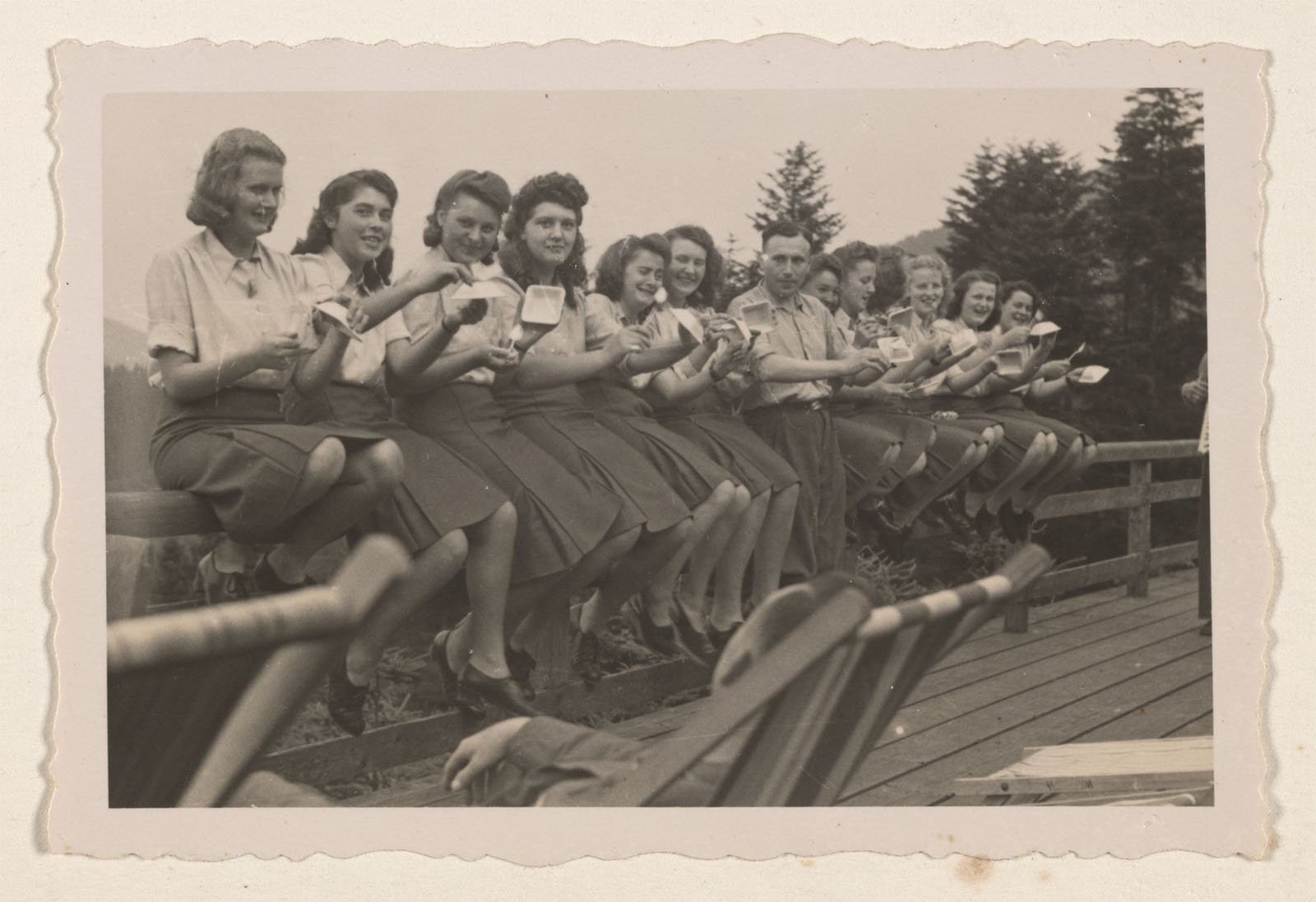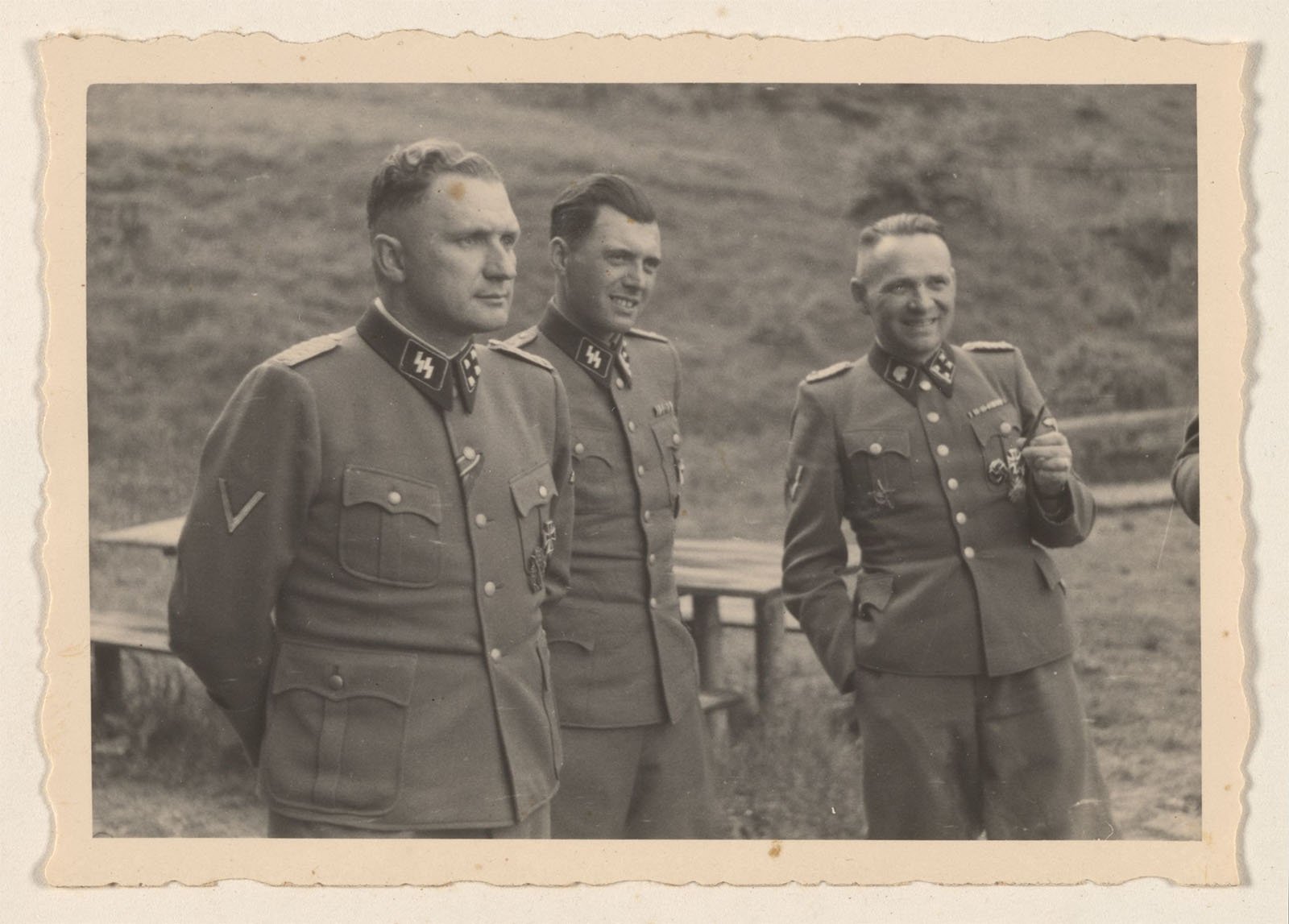Photography has long played an instrumental role in preserving moments — some mundane, some good, and others downright horrific. A photo album from Auschwitz fits squarely in the latter group, although not in the way one might expect.
One photo shows a group of women smiling and eating blueberries, while others show German SS officers chatting and smiling.

The photo album was plucked from a trash bin in a German apartment by a United States counterintelligence officer in 1946 while he was hunting Nazi war criminals. He held onto it for decades before sending it anonymously to Rebecca Erbelding, a U.S. Holocaust Memorial Museum archivist, in 2007.
At its core, the album shows the everyday life of Nazi officers and their secretaries. However, hidden in the background, millions of people were being tortured, experimented on, and systematically murdered.
Moisés Kaufman and Amanda Gronich wrote about the Nazi photo album in their 2018 play, Here There Are Blueberries. The award-winning play’s title highlights the carefree berry-eating put to photographic film just outside the site of the most notorious genocide in human history.
Here There Are Blueberries opened last week off-Broadway and was recently named a finalist for the 2024 Pulitzer Prize for Drama.
The idea that Nazis lit a Christmas tree while millions of people, mostly European Jews but also non-Jewish Poles, Romani, and Soviet prisoners of war, were imprisoned and exterminated is jarring. In powerful ways, images like these can prove more disturbing than ones showing explicit violence.
![]()
“When I first saw the photographs, I got goosebumps,” Moisés Kaufman explains to Anderson Cooper in the 60 Minutes
After the photo album surfaced, historians went to work to learn as much as possible about the people in the images. Dr. Josef Mengele, the notorious “Angel of Death,” appeared in some images.
Historians determined that the album belonged to an SS officer, Karl-Friedrich Höcker, the deputy of the camp’s final commandant. Höcker died at age 88, just six years before his scrapbook landed on Erbelding’s desk.
![]()
“The album reminds us that the perpetrators of the Holocaust were human beings, men and women with families, children and pets, who celebrated holidays and took vacations… These people were human beings… and these photographs remind us what human beings are capable of when they succumb to anti-Semitism, racism and hatred,” Erbelding said in a 2018 interview with The New York Times.
The full extent of the role Höcker played was not known until the album appeared, so the “crucial cog in the Nazi killing machine,” as Erbelding describes him, eluded severe punishment throughout his life. He served stints in prison here and there for his roles at other concentration camps, but he maintained until his death that he had no idea what was happening at Auschwitz.
The album also shows a Nazi vacation home complex where officers could bring their wives and children while they were stationed there. Nobody would have known about this auxiliary part of Auschwitz without the photo album.

Höcker’s scrapbook may be a chilling treasure trove for historians, but it means something different for Irene Weiss, who arrived at Auschwitz one day after Höcker. Weiss was there for a very different reason, as the 13-year-old Hungarian Jew arrived at the camp on one of the infamous trains and soon lived an unimaginable nightmare.
“Everything was in a matter of seconds that the stick came down between us,” Weiss tells Cooper of the moment when Weiss was separated from her younger sister, Edith. “He held life and death with that stick.”
The stick Weiss refers to was the tool held by an SS Officer that pointed prisoners to their fate: to work or to die.
“All of a sudden, I was alone,” Weiss recalls.

This moment, among the worst a person could ever experience, was captured by a different Nazi photographer documenting the arrival of the new batch of victims. It is not part of Höcker’s album, although seen in the video above. Weiss never saw her younger sister, brother, or parents alive again.
![]()
The 116 pictures in Höcker’s album show the infamous concentration camp as he saw it and wanted to remember it forever. They show a place of casual conversation, Christmas celebrations, singing, and even eating berries on a summer’s day. The normalcy of it all is thoroughly disturbing.
Image credits: Photos courtesy of the United States Holocaust Memorial Museum
